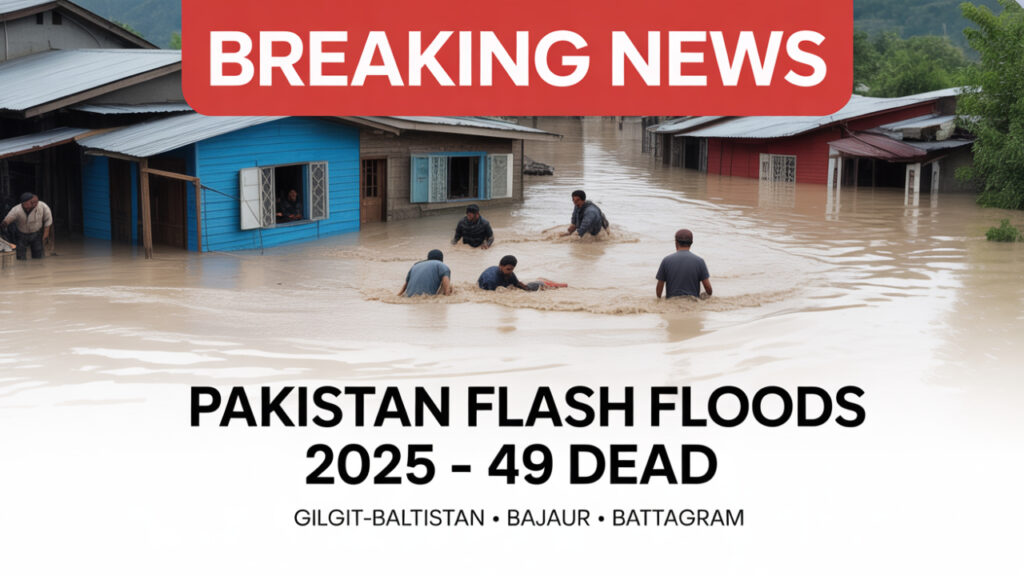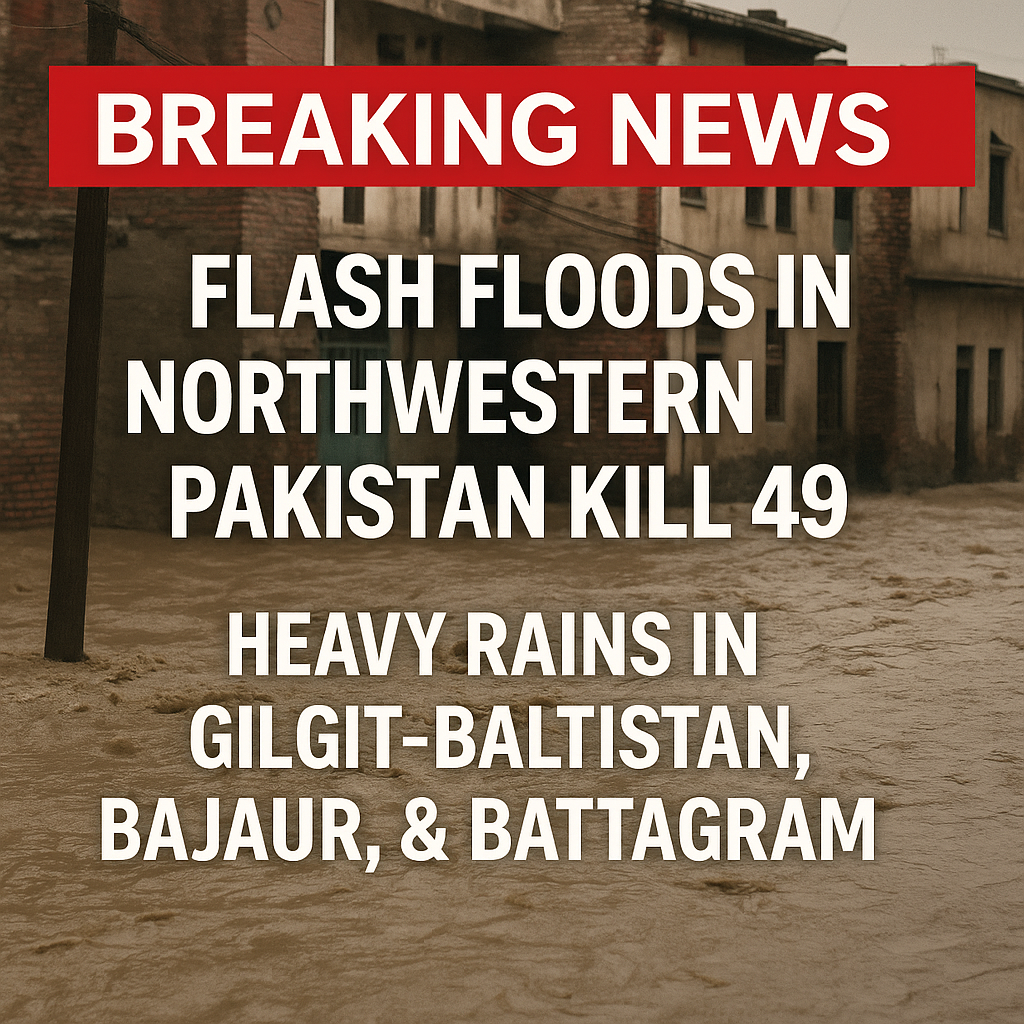
The Pakistan Flash Floods 2025 have already turned into a national tragedy, killing at least 49 people in the last 24 hours after heavy monsoon rains swept across Gilgit-Baltistan, Bajaur, Battagram, and parts of Kashmir. According to official rescue teams, 17 people are still missing, while nearly 1,300 stranded tourists were rescued from the Siran Valley.
These tragic events highlight once again how vulnerable Pakistan remains to climate change and extreme weather patterns.
Areas Most Affected:
- Gilgit-Baltistan – Landslides blocked roads, cutting off villages and trapping families.
- Bajaur District – Heavy rains destroyed dozens of homes, leaving hundreds displaced.
- Battagram – Severe floods washed away small bridges and road links.
- Pakistan-administered Kashmir – Mountain streams overflowed, causing flash floods in rural areas.
Rescue and Relief Efforts:
- The National Disaster Management Authority (NDMA) deployed emergency supplies to flood-hit areas after the Pakistan Flash Floods 2025.
- Local rescue teams continue to search for missing people day and night.
- Authorities provided temporary shelters to families displaced by the floods.
However, poor infrastructure and nonstop rainfall still delay relief operations and make it harder to reach remote areas.

Why Pakistan Faces Repeated Flood Disasters:
Pakistan is ranked among the top 10 most climate-vulnerable countries in the world. Every year, monsoon rains bring massive flooding that destroys lives, agriculture, and infrastructure. Experts believe:
- Glacier melt in the northern mountains increases flood risks.
- Unplanned urbanization worsens water drainage problems.
- Climate change is making rainfall more unpredictable and intense.
Human Stories: Life After the Floods:
Survivors in Battagram shared heartbreaking stories of losing loved ones and homes within minutes. A resident told reporters, “We were asleep when water entered the house. By the time we woke up, everything was gone.”
Many displaced families are now waiting for food, tents, and medical aid.
Government’s Next Steps:
- Immediate compensation for affected families.
- Restoration of damaged roads and electricity in Gilgit-Baltistan and Bajaur.
- Long-term plans to improve disaster management and flood forecasting.
Experts stress that climate adaptation and better infrastructure are essential to prevent such disasters from repeating every year.
Conclusion:
The flash floods in northwestern Pakistan (2025) are a painful reminder of the country’s climate crisis. With dozens of lives lost and thousands displaced, Pakistan urgently needs stronger flood prevention systems and sustainable climate policies







Leave a Reply